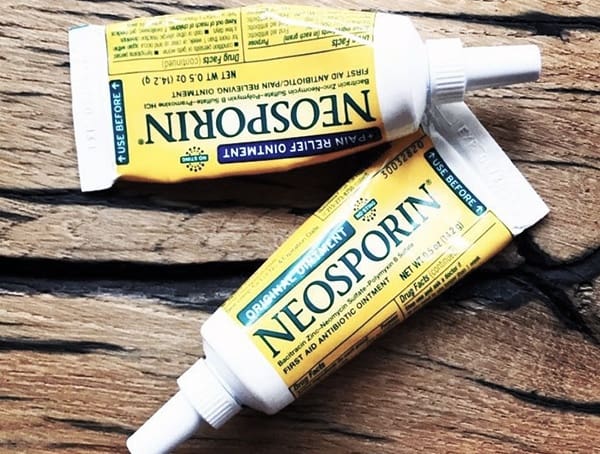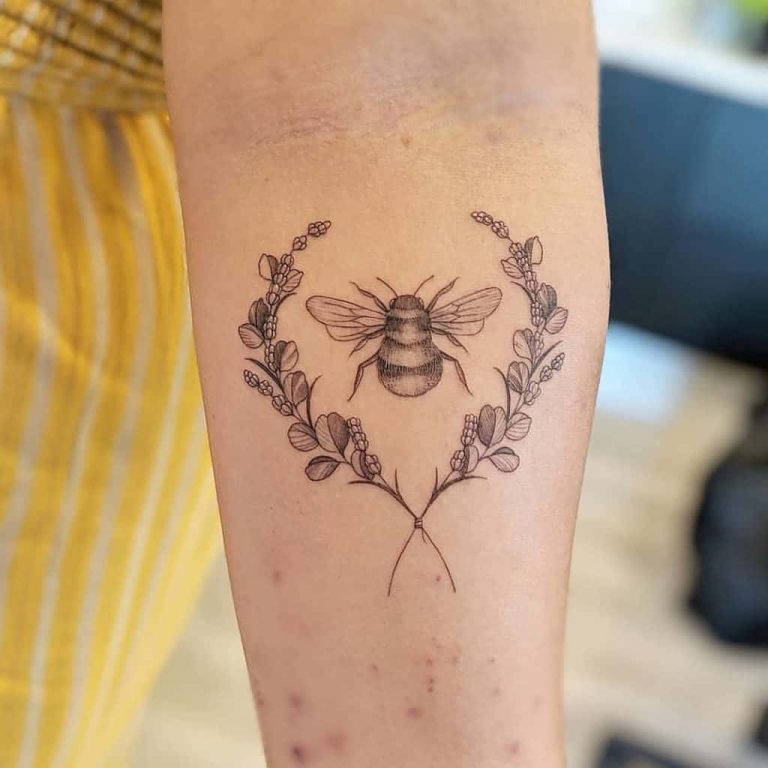Yes, you can use triple antibiotic ointment on your tattoo. Triple antibiotic ointment is an over-the-counter medication that contains three antibiotics: bacitracin, neomycin, and polymyxin B. These antibiotics work together to kill bacteria and prevent infection.
- Thoroughly clean the tattooed area with mild soap and water
- Pat dry with a clean towel
- Apply a thin layer of triple antibiotic ointment to the tattooed area
- Cover the tattooed area with a sterile gauze pad or wrap
- Repeat steps 2-3 three times per day until the tattoo is healed (usually 7-10 days)
How to Use Antibacterial Ointment for Tattoos
Antibiotic Cream for Tattoo Infection
A tattoo infection can occur when bacteria gets into the skin through the needle during the tattooing process. This can happen if the needles are not sterile, or if the artist does not practice good hygiene. Symptoms of a tattoo infection include redness, swelling, pain, and pus.
If you think you have an infection, it is important to see a doctor right away so that it can be treated properly.
One treatment for a tattoo infection is antibiotic cream. Antibiotic cream helps to kill bacteria and reduce inflammation.
It is important to follow your doctor’s instructions when using this medication. Apply the cream as directed and do not bandage the area unless your doctor tells you to. You should also avoid exposing the area to sunlight or other sources of UV light while you are using this medication.
What Ointment Can I Put on My Tattoo
If you’re looking for an ointment to put on your tattoo, you’ve come to the right place. In this blog post, we’ll provide detailed information about what ointment can be used on tattoos, how to apply it, and how often it should be applied.
Let’s start with the basics: what is an ointment?
An ointment is a smooth, thick substance that helps protect skin and promote healing. It can be made from petroleum jelly, beeswax, or other ingredients. Ointments are typically used to treat dry skin, minor cuts and scrapes, and diaper rash.
Now that we know what an ointment is, let’s talk about which ones can be used on tattoos. The best type of ointment to use on a new tattoo is a non-scented hypoallergenic variety like Aquaphor Healing Ointment or Eucerin Original Healing Soothing Repair Creme. Apply a small amount of ointment to your tattoo 3-4 times per day for the first week or two until the tattoo starts to heal.
After that, you can reduce the frequency of applications to 2-3 times per day as needed.
If you have a older tattoo that is starting to fade or has become dry and cracked, you may need something a little more heavy-duty than a standard over-the-counter ointment. In this case, we recommend using an emu oil based product like Tattoo Goo Renewal Lotion or H2Ocean Aftercare Cream.
These products help to moisturize and protect aging tattoos while promoting healing. Apply them according to package directions – usually 2-3 times per day – until your tattoo has healed fully.
So there you have it!
Now you know all about choosing and using the right ointment for your tattoo. Be sure to follow these tips so you can keep your ink looking fresh and vibrant for years to come!
I Put Neosporin on My Tattoo
If you’re like most people, you probably have a tube of Neosporin in your medicine cabinet. And if you’re like most people, you probably never think twice about using it when you have a cut or scrape. But what about using Neosporin on your tattoo?
Is it safe?
The short answer is yes, Neosporin is safe to use on tattoos. The active ingredients in Neosporin (bacitracin, neomycin, and polymyxin B) are all antibiotics that can help to prevent infection in open wounds.
So if you have a new tattoo that is still healing, applying a thin layer of Neosporin can help to keep it clean and protected.
Of course, there are some things to keep in mind when using Neosporin on your tattoo. First of all, make sure the tattoo is completely healed before applying any ointment or cream.
If the tattoo is still scabbing or peeling, wait until it is fully healed before using anything other than plain soap and water. Secondly, be sure to only apply a very thin layer of Neosporin; too much can actually hinder the healing process by suffocating the skin cells. Finally, don’t forget to wash your hands thoroughly before touching your tattoo!
So there you have it: yes, Neosporin is safe to use on tattoos! Just remember to use it sparingly and only after the tattoo has fully healed.
What Can I Put on My New Tattoo
You’ve finally done it. You’ve decided to get a tattoo. But now you’re faced with a new question: what can I put on my new tattoo?
The answer may seem obvious – anything you want! But there are actually a few things to consider when choosing what design to put on your body for the rest of your life. Here are a few things to think about when making your decision:
1. What is the meaning behind the tattoo?
This is probably the most important question to ask yourself. A tattoo is permanent, so you want to make sure that the design you choose has a meaning that will last a lifetime.
Think about what you want the tattoo to represent and be sure that it’s something you’ll still feel strongly about in 10, 20, or even 50 years from now.
2. What is the placement of the tattoo?
Where you decide to put your tattoo can also affect what design you choose.
For example, if you want a small and delicate Tattoo placed on your wrist, ankle or collarbone then look into these areas for inspiration as they will compliment these areas nicely . Conversely, large and more detailed tattoos usually look best on larger canvases such as your back, thighs or chest . Keep in mind that some workplaces have strict policies against visible tattoos, so if you’re looking for a professional environment then placing your ink where it can be easily covered up may be necessary .
Consider all of these factors when deciding where to place your new tattoo! 3. Do I want my Tattoo in black and white or color ? This choice often comes down to personal preference , but it’s worth considering how well certain colors will age over time .
Black ink is by far the most popular choice for tattoos because it tends to hold its color well over time , while brighter colors may fade somewhat with age . If you do choose color , be sure to select hues that complement each other well ; Otherwise , they may end up muddy-looking as they blend together over time . 4. How big do I want my Tattoo ? The size of your Tattoo should be based on both Placement ( see above ) as well as personal preference ; Just keep in mind that larger designs will take longer (and cost more) to complete than smaller ones . 5. What style of Tattoo should I get ?

Credit: www.healthline.com
Is Antibiotic Ointment Safe for Tattoos?
If you’re considering getting a tattoo, you may be wondering if antibiotic ointment is safe to use on tattoos. The short answer is yes, it is safe to use antibiotic ointment on new tattoos. However, it’s important to follow the instructions of your tattoo artist and never use more than directed.
Antibiotic ointment helps to prevent infection by keeping the area clean and moist. It also helps to speed up the healing process by keeping the skin pliable. When applied correctly, antibiotic ointment can help your tattoo heal quickly and without complications.
It’s important to note that not all antibiotic ointments are created equal. Be sure to ask your tattoo artist what they recommend before using any over-the-counter products. Some products may contain ingredients that can irritate or even damage newly healed skin.
When in doubt, always err on the side of caution and consult with your tattoo artist before using any new products on your tattoo.
What Kind of Ointment Do You Put on Tattoos?
If you’re looking to get a tattoo, you’ll need to find the right artist and parlor for you. But once you’ve made your decision and are ready to go under the needle, there’s one more important step: finding the right ointment for tattoos.
There are a few different types of ointments that can be used on tattoos, each with its own set of benefits.
petroleum jelly is a popular choice because it’s cheap and easy to find, but it can actually cause your tattoo to heal slower and make it more prone to infection. A better option is an antibiotic ointment like Neosporin, which will help keep your tattoo clean and protected while it heals.
For the first few days after getting your tattoo, you’ll want to apply a thin layer of ointment several times a day.
After that, you can start using lotion instead; just make sure to avoid anything that contains fragrances or dyes, as these can irritate the skin. Once your tattoo is fully healed, you can use any type of moisturizer you like; just don’t forget to protect it from the sun with sunscreen!
What Healing Ointment is Good for Tattoos?
There are a variety of healing ointments that can be beneficial for tattoos. Some common options include Aquaphor, A&D Ointment, and Vaseline. These products can help to keep the tattoo area moist and protected while it heals.
It is important to follow the aftercare instructions provided by your tattoo artist, which may include using a specific type of ointment. Healing times will vary depending on the size and location of the tattoo, but most tattoos will take around two weeks to fully heal.
What Happens If You Put Neosporin on a Tattoo?
If you put Neosporin on a tattoo, it can help to speed up the healing process and prevent infection. However, it is important to only use a small amount of Neosporin and to make sure that it does not come into contact with the tattooed area for more than a few minutes at a time. If you are using Neosporin on a new tattoo, be sure to follow the instructions provided by your tattoo artist.
Conclusion
You might be wondering if you can use triple antibiotic ointment on your new tattoo. The answer is maybe. It depends on the artist and their aftercare instructions.
Some artists recommend using a thin layer of ointment for the first few days, while others say to avoid it altogether. If you’re unsure, it’s always best to ask your artist before applying anything to your tattoo.




